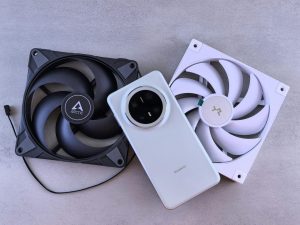Analyzing the Efficiency of Different Wireless Communication Protocols
Wireless communication has become an essential part of our daily lives, enabling us to stay connected and access information on-the-go. From cellular networks to Wi-Fi and Bluetooth, the technology behind wireless communication continues to evolve and improve. However, not all wireless communication protocols are created equal. With the constant need for faster and more reliable connectivity, it’s crucial to analyze the efficiency of different wireless communication protocols. In this article, we’ll take a closer look at some of the most commonly used protocols and compare their performance. So, let’s dive into the world of wireless communication and see which protocol reigns supreme in terms of efficiency.
Understanding Wireless Communication Protocols
Wireless communication protocols can be defined as a set of rules or standards that govern the exchange of data between two or more devices without the use of physical cables. These protocols utilize a range of frequencies, radio waves, and other technologies to transmit and receive data wirelessly. Each protocol has its own unique advantages and limitations, making it suitable for different types of devices and applications.
Wi-Fi
Wi-Fi is one of the most widely used wireless communication protocols, known for its high-speed data transfer capabilities. It operates in the 2.4GHz and 5GHz frequency bands, offering faster data rates and greater range than Bluetooth. Wi-Fi is commonly used in home and office networks, allowing multiple devices to connect and share data simultaneously. It also has backward compatibility, allowing older devices to connect to newer Wi-Fi networks. However, Wi-Fi can be susceptible to interference from nearby devices and physical obstructions, affecting its overall efficiency.
Bluetooth
Bluetooth is another popular wireless communication protocol, used primarily for short-range communication between devices. With its low power consumption and low cost, Bluetooth is commonly used in wireless headsets, smartwatches, and other wearable devices. It operates in the 2.4GHz frequency band and offers secure communication through encryption. However, Bluetooth has a slower data transfer rate compared to Wi-Fi and is limited in terms of range, making it suitable for smaller, personal devices rather than large networks.
Cellular Networks
Cellular networks, also known as mobile networks, are used for wireless communication over long distances. They utilize a series of base stations or cell towers to transmit data and voice signals between mobile devices. Cellular networks are constantly evolving, with each generation offering faster data transfer speeds and better coverage. The latest and most efficient cellular network is the 5G network, with speeds of up to 100 times faster than its predecessor, 4G. However, cellular networks can be expensive to implement and maintain, making them less suitable for personal use and more suitable for large-scale applications.
Comparing Efficiency
Now that we’ve covered some of the most commonly used wireless communication protocols, it’s time to see how they measure up in terms of efficiency. Wi-Fi, with its fast data transfer rates and wide coverage, is the clear winner for larger networks where multiple devices need to connect simultaneously. On the other hand, Bluetooth’s low power consumption and lower cost make it the ideal choice for smaller, personal devices. However, when it comes to long-distance communication, cellular networks are unbeatable in terms of their speed and coverage, making them more efficient for applications such as mobile data and calls.
The Future of Wireless Communication
With the rise of the Internet of Things (IoT), the demand for faster and more efficient wireless communication is only going to increase. As a result, we can expect to see the further development of existing protocols and the emergence of new ones that cater to specific needs. An example of this is the 802.11ax, also known as Wi-Fi 6, which offers faster data transfer speeds and better performance in crowded areas. Similarly, the development of Low Power Wide Area Networks (LPWANs) is expected to revolutionize the way small, low-power devices communicate wirelessly.
The Bottom Line
Wireless communication protocols have come a long way in terms of efficiency, and they continue to evolve to meet the growing demand for faster and more reliable connectivity. In this article, we took a closer look at some of the most commonly used protocols and compared their performance. While each protocol has its own advantages and limitations, their efficiency ultimately depends on the specific application they are being used for. As technology continues to advance, we can expect to see even more efficient wireless communication protocols that will further shape the way we stay connected.










